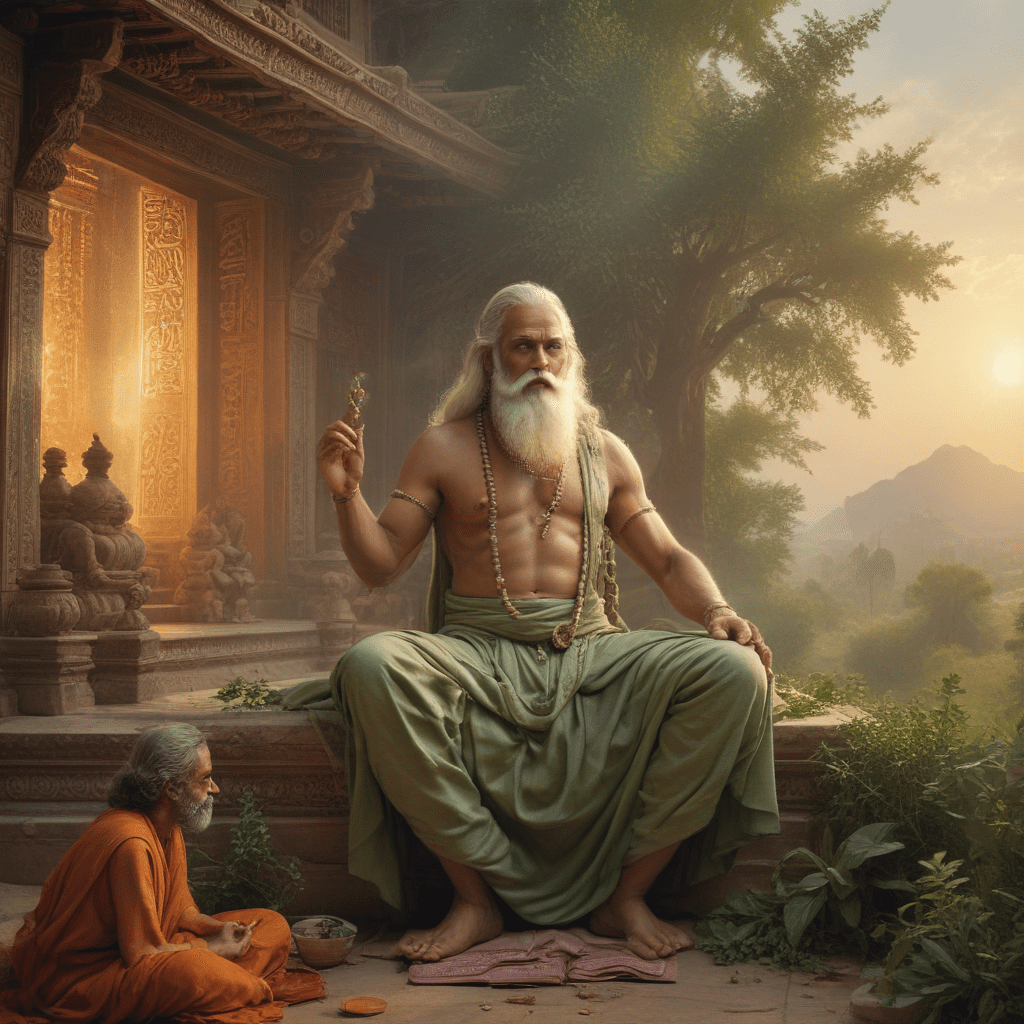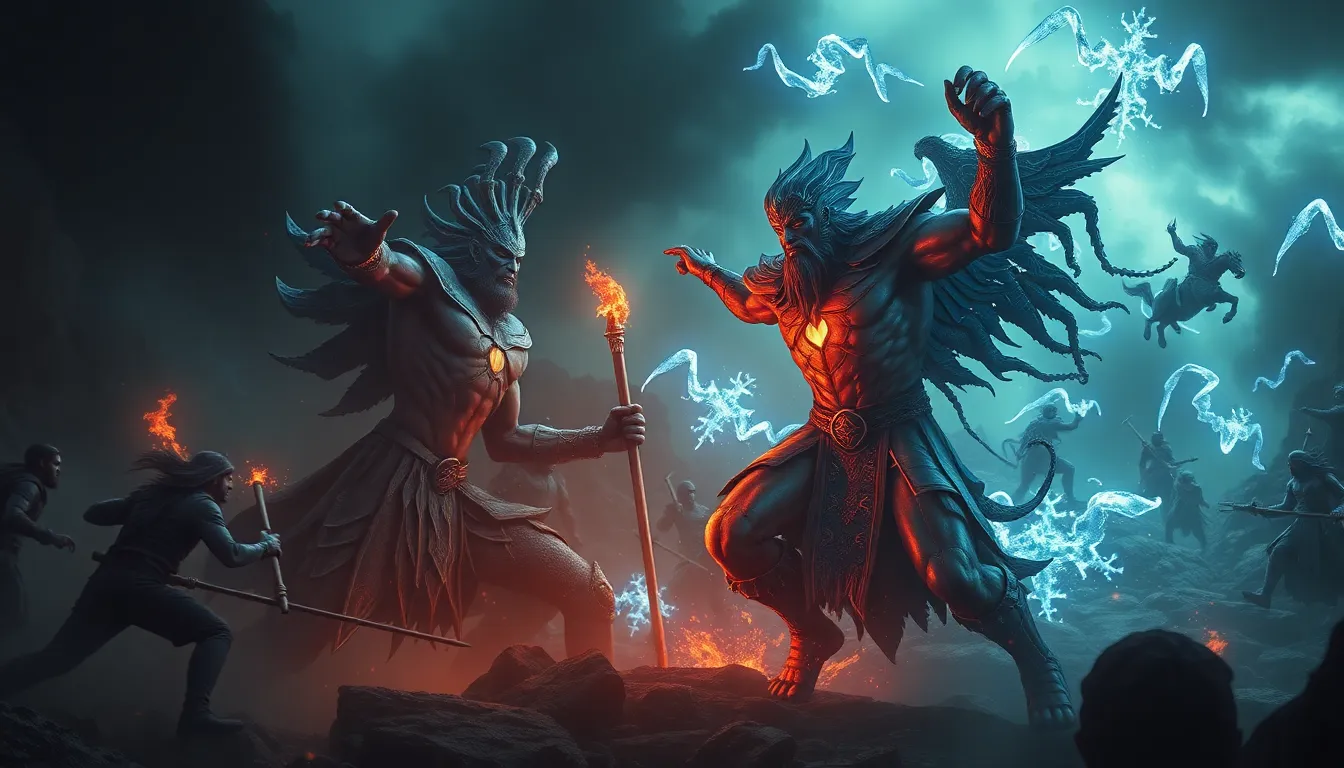The Myth of Sage Vyasa: The Compiler of Vedas and Puranas
1. Introduction: The Enigma of Sage Vyasa
Sage Vyasa, revered in the annals of Indian mythology, stands as an enigmatic figure credited with the monumental task of compiling the Vedas and Puranas. His legend, imbued with divine origins and extraordinary feats, has woven its way into the fabric of Hindu religious traditions. However, a closer examination of historical and literary evidence unravels the myth surrounding this enigmatic figure, revealing a more nuanced and collaborative reality behind the creation of these sacred texts.
2. Traditional Narratives: Vyasa as the Divine Author
According to traditional accounts, Sage Vyasa, also known as Krishna Dvaipayana, was the son of sage Parashara and Satyavati. Born on an island in the river Yamuna, he was revered as an incarnation of Lord Vishnu. Legend holds that Vyasa was endowed with extraordinary wisdom and literary prowess, enabling him to single-handedly compile and edit the four Vedas and write the eighteen Puranas. These narratives portray Vyasa as a divine author, inspired by celestial powers.
3. Historical Analysis: Lack of Evidence for a Single Author
Historical analysis casts doubt on the existence of a single individual who could have authored the vast corpus of Vedic and Puranic literature. The Vedas, the oldest sacred texts of Hinduism, are believed to have evolved over centuries, with multiple authors and contributors. Similarly, the Puranas, though attributed to Vyasa in traditional accounts, exhibit diverse authorship and compilation processes. Linguistic and stylistic variations within these texts suggest the involvement of numerous authors and redactors over extended periods.
4. The Vedas and Their Evolution
The Vedas, comprising the Rigveda, Samaveda, Yajurveda, and Atharvaveda, represent the earliest known literary works of India. These texts are primarily collections of hymns, rituals, and philosophical insights, composed by various sages and seers over an extended period. The Rigveda, the oldest of the Vedas, is estimated to have been compiled around 1500 BCE. Vedic scholarship suggests that these texts were not authored by a single individual but evolved through oral transmission, compilation, and adaptation over centuries.
5. The Origin of the Puranas: Multiple Authors and Compilers
The Puranas, a vast collection of mythological narratives, historical accounts, and religious teachings, were composed over a much later period. Unlike the Vedas, which are considered sacred and authoritative, the Puranas were compiled by multiple authors and redactors. These texts exhibit significant diversity in style, content, and chronology, indicating the involvement of numerous individuals in their creation and transmission. The attribution of the Puranas to Sage Vyasa is a later development, likely intended to lend an air of divine authority to these texts.
6. Literary Analysis: Absence of a Uniform Style or Coherent Narrative
Literary analysis of the Vedas and Puranas reveals a lack of uniform style or coherent narrative, further supporting the notion of multiple authors and compilers. The Vedas, in particular, exhibit a diverse range of poetic styles, metrical forms, and linguistic usage, suggesting different periods of composition and authorship. The Puranas, while sharing some common themes and motifs, exhibit significant variations in their structure, content, and language, indicative of different authors and redactions.
7. Archaeological Evidence: No Contemporary Inscriptions Attributed to Vyasa
Archaeological evidence also casts doubt on the existence of a single historical figure named Vyasa. Despite extensive excavations and research, no contemporary inscriptions or artifacts have been found that can be attributed to Vyasa. The earliest inscriptions mentioning Vyasa appear centuries after the supposed period of his life, providing no reliable historical evidence for his existence.
8. Cultural Context: The Need for a Legendary Figure to Explain Complex Traditions
The myth of Sage Vyasa likely emerged in a cultural context where the need for a single legendary figure to explain the origins of complex religious traditions was felt. As the Vedas and Puranas evolved over centuries, the attribution of these texts to a single divine author provided a simplified and cohesive narrative for understanding their diverse origins and teachings.
9. Modern Perspectives: The Collaborative Nature of Ancient Indian Literature
Modern scholarship on ancient Indian literature recognizes the collaborative nature of its creation. The Vedas and Puranas were not the work of single individuals but rather the result of centuries of oral transmission, adaptation, and compilation by numerous sages, scholars, and scribes. This collaborative process is reflected in the diversity of styles, content, and authorship evident in these texts.
10. Conclusion: Debunking the Myth, Embracing the Collective Genius
In conclusion, the myth of Sage Vyasa as the sole compiler of the Vedas and Puranas is a later development, intended to provide a divine origin for these complex and multifaceted texts. Historical, literary, and archaeological evidence suggests a more nuanced and collaborative reality, with multiple authors and redactors contributing to the creation of these foundational works of Indian literature. Embracing this collective genius allows for a deeper appreciation of the richness and diversity of ancient Indian literary traditions.
FAQ
1. Who is traditionally credited with compiling the Vedas and Puranas?
Sage Vyasa
2. What is the historical evidence regarding the authorship of the Vedas and Puranas?
Historical evidence suggests multiple authors and compilers were involved in the creation of these texts over extended periods.
3. What is the significance of the myth of Sage Vyasa?
The myth of Sage Vyasa emerged as a way to simplify and provide a divine origin for the diverse origins and teachings of the Vedas and Puranas.
4. What is the modern scholarly understanding of the authorship of the Vedas and Puranas?
Modern scholarship recognizes the collaborative nature of ancient Indian literature, with numerous authors and redactors contributing to the creation of these texts.
5. Does archaeological evidence support the existence of a historical figure named Vyasa?
No contemporary inscriptions or artifacts have been found that can be attributed to Vyasa, casting doubt on the existence of a single historical figure with this name.


